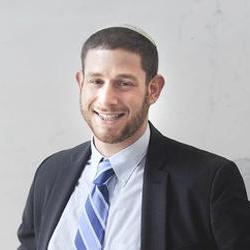Protective Paralysis

שמות רבא כ:ב
כך היה פרעה כששלח את ישראל לא היו לפניו כלום אמרו לו גדולי מלכות מה עשית אילו לא היה בידם אלא הבזה לבדה דיים שנאמר (שמות יב) וגם ערב רב עלה אתם ולא עוד אלא שכמה עשירים היו בהם כמה חכמים וכמה בעלי אומניות שנאמר (שיר ד) שלחיך פרדס רמונים כמה אנשים ונשים וטף היו שנאמר (ירמיה נ) וכל שוביהם החזיקו בם מה כתיב אחריו (שם) גואלם חזק ה׳ צבאות שמו באותה שעה התחיל קורא ווי ווי ויהי בשלח
Exodus Rabbah 20:2
When Pharaoh let Israel go, they were worthless in his eyes. His regal advisers, however, said to him, “What have you done? If they had only departed with their plunder, it would have been enough [to mourn their loss], as it says: And a mixed multitude went up also with them . . . (Exod. 12:38). Add to this the number of rich people among them, the many wise people and skilled craftsmen, too . . . Consider the number of men, women, and children they include, as it says: All their captors held them . . . (Jer. 50:33) What does it say after this? Their Redeemer is mighty, His name is Lord of hosts; [He will champion their cause . . .] (Jer. 50:34). It was then that Pharaoh began to wail: Vay, Vay! (Alas!). Hence, vayyehi b’shallah (“there was woe in letting the people go” – a rereading of Exod. 13:17).
Have we become like Pharaoh in the midrash above: both an oppressive captor and a powerless captive of his own psychological blindness? Rabbi Abraham Joshua Heschel raised this question nearly fifty years ago in commenting upon the role of race and religion in the United States for citizens of all backgrounds. Today, we must again ask a similar question of ourselves: have we despaired of the apparently waning worth of the Jewish people, emotionally letting go of our people’s potential even as the next generation actually holds greater numbers, resources, and wisdom than our eyes alone perceive?
I ask these questions after learning of a new demographic study from Brandeis University that upends previous statistical projections predicting a steady decline in the number of American Jews. Instead, this more sophisticated survey shows a tremendous rise in the American Jewish population of more than 1.3 million above the estimate from 10 years ago. A 20-percent growth is a huge increase! Obviously, information technology has vastly improved beyond that available to the National Jewish Population Study (NJPS) in 1990 and 2000. Nonetheless, even then, critics of the NJPS and its interpretation expressed concern that the study’s data and analysis did not account for the whole story of American Judaism. In the words of my colleague and former classmate Rabbi Brent Spodek, we had “confused the observable with the significant” and allowed our fears of demise to triumph over our ideals and dreams for the future.
While worries about intermarriage and assimilation justly remain, we must use this new evidence to halt the siege mentality that has produced a protective paralysis. This reactionary culture has kept many Jews from adequately appreciating and financially supporting the progressive and creative expressions of American Jewish life that have become the hallmark of my generation. Indeed, another recent study, by Jack Wertheimer, Joseph and Martha Mendelson Professor of American Jewish History at JTS, articulates how those endeavors give young Jews so much Jewish pride.
We now have the opportunity to play the role of Pharaoh’s advisers in this midrash. Like them, let us call attention to “the many wise people and skilled craftsmen” among us today, those who populate our midst and will champion God’s cause through social and spiritual transformation in the coming decades.



